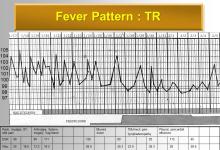Deep remission in SLE – what is it, and can we achieve it? Save

Recent reports on small numbers of lupus patients treated with CAR-T cells directed against CD19+ B lymphocytes have generated considerable excitement, not so much because the initial response to this therapy was favorable, but because after follow-up durations of two years or longer the patients were reported to have an ongoing clinical remission without the need for further treatment and in the absence of most autoantibodies. This state has been referred to in terms such as “immunological remission” or “resetting the immune system”, suggesting that an important and potentially permanent change had occurred. Perhaps we can call it a Deep Remission, for now. So what is this Deep Remission? How can it defined? And can we really achieve it?
Deep Remission in the past
First it must be recognized that similar observations as the recent ones have been made in the past. Autologous stem-cell transplantation was felt to offer long-term or even permanent abolition of the disease for some lupus patients, but its more wide-spread use was prevented by risks including substantial mortality. The use of myeloablative doses of cyclophosphamide was also believed for some time to induce a resetting of the immune system, although a later trial did not support this. The “Kiel protocol”, a combination of higher doses of cyclophosphamide and plasma exchange, was also said to lead to permanent remission in some patients. Perhaps most importantly, many practicing rheumatologists have noted that from time to time, a patient who had severe lupus and was treated with conventional means eventually achieved a more stable course leading over the years to remission, in some cases without the need for any therapies. Thus, the natural course of lupus may include this possibility in a small number of fortunate patients.
Definitions
Remission in lupus has been defined by the DORIS group as a clinical SLEDAI of 0 (meaning: none of the lupus activity items of the SLEDAI are present), a low physician’s global assessment (to deal with activity that is not captured by the SLEDAI), and stable background medication with at most 5 mg prednisone a day. This has been a useful definition both in clinical care (treating to target) and in research (including clinical trials) and it is comparable to how remission is defined for other diseases, especially when it comes to allowing various treatments. Needless to say, a state of remission that no longer requires any treatment would be a far greater achievement, and if that state were accompanied by the absence of autoimmune laboratory phenomena and were sustained for a longer period of time, it would start approaching what conceptually we would think of as a cure. The DORIS groups is now planning work in defining this state of deep remission, tentatively called DORIS+. This is not intended to replace the DORIS definition but to be used alongside it.
But as always, the devil is in the details.
As to clinical manifestations, there is ongoing uncertainty whether various subjective symptoms that are common in patients with lupus, that are hard or impossible to measure and often seem poorly responsive to treatment (sometimes referred to as type 2 symptoms) can be considered bona fide manifestations of the disease in which case their amelioration should of course also be included in a definition of remission. With regards to duration, the recent reports extending to two years of follow-up are encouraging, but a further continuation to, say, five years would certainly be much stronger evidence of a ‘permanent’ resetting of the immune system. And the requirement for autoimmune phenomena to be resolved runs into many technical issues. ANA at very low titer are normal in the healthy population, low titers are non-specific, and experience shows that even patients in very long-lasting remission may remain ANA positive. That latter finding also holds true for some specific autoantibodies such as anti-Ro, which are therefore believed to be produced by long-lived plasma cells rather than, as is the case for many other autoantibodies, shorter lived plasma cells and/or plasma blasts.
Can deep remission be achieved?
Needless to say, we all hope for our patients that they will achieve such a deep remission. The recent case series on CAR T cells tells us that sometimes this is possible, as did some older therapies, and this offers us hope. What remains uncertain is in what proportion of patients this can be achieved, whether we can identify such patients up front, and what therapies offer the best chance of getting there.
In summary, recent case series suggest that a deep state of remission, one that approaches the ultimate goal of a cure, can be achieved in some patients. How exactly to define such a state is no trivial matter, and how many patients can achieve this and what treatments are needed to do so is currently under intense investigation.










If you are a health practitioner, you may Login/Register to comment.
Due to the nature of these comment forums, only health practitioners are allowed to comment at this time.